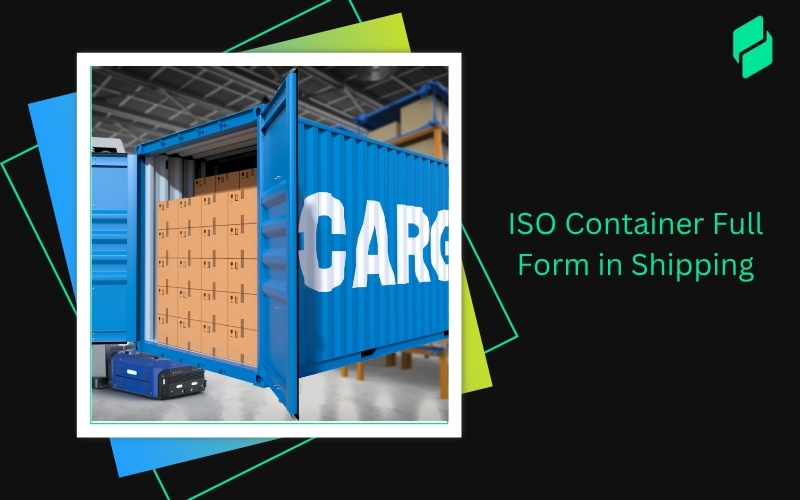Optimize your business: use unlimited savings with Pazago fulfilled now!
Get Started ->Have you ever wondered what keeps the wheels of global commerce spinning smoothly? It's not just about the products or the companies; it's about the seamless processes behind the scenes, particularly in areas like inbound dock management.
This crucial aspect of the supply chain ensures that goods flow efficiently from ships to shelves, making your favorite products available when needed.
Let's explore what makes this process vital and how mastering it can significantly improve your supply chain efficiency.
What Exactly is Inbound Dock Management?
Inbound dock management involves overseeing the receipt of goods at warehouse docks from suppliers and manufacturers. It's where coordination meets logistics, ensuring that every item shipped to a warehouse or distribution center is received, documented, and managed properly from the moment it arrives.
This process is vital for maintaining the pulse of supply chains across various industries, from retail to manufacturing.
Goals of Inbound Dock Management

Why is managing your inbound dock so critical? The primary goal is to minimize delays and reduce bottlenecks that can disrupt your supply chain.
By effectively managing your dock, you can enhance turnaround times, improve inventory accuracy, and ultimately, boost customer satisfaction. Isn’t it always about getting the right products to the right place at the right time?
Collaboration and Communication in Inbound Dock Management
Imagine a scenario where communication falters at the dock. What happens? Delays, confusion, and errors increase. That’s why fostering a collaborative environment where shipping coordinators, warehouse staff, and transport operators communicate effectively is essential.
Effective communication not only smooths out potential issues but also ensures everyone involved is on the same page.
Effective collaboration and communication tools, similar to what Pazago offers, can revolutionize how stakeholders in the supply chain interact and manage their operations seamlessly.
Enhancing Supply Chain Efficiency
Optimizing your inbound dock operations can improve your supply chain efficiency. It's about more than just unloading trucks and storing goods.
Are you using the latest technology to track shipments in real time? Do you have protocols in place to resolve any issues quickly?
Focusing on these areas can turn your dock into a cornerstone of supply chain efficiency.
Also Read: Understanding Integrated Logistics Management System and its Benefits
The Importance of Efficient Inbound Dock Management
Did you know that a well-oiled inbound dock can be the heartbeat of your supply chain? Effective inbound dock management isn’t just about handling incoming shipments; it’s about turning your dock into a powerhouse of productivity and safety.
Let’s dive into how mastering this crucial aspect can transform your logistics operations from good to great.
1. Enhancing Visibility for Effective Inbound Dock Management
Imagine being able to predict every detail of your shipments before they arrive. Enhanced visibility in inbound dock management allows you to do just that.
With suitable systems in place, you can track your shipments in real-time, plan for the appropriate labor distribution, and prepare storage areas ahead of time. How much smoother would your operations run if you were always two steps ahead?
2. Optimized Inventory with Inbound Dock Management
Now, think about the last time you encountered an overstock or understock situation. Frustrating, isn’t it? By optimizing your inbound dock processes, you can ensure that goods are not only unloaded but also stored efficiently.
This minimizes handling time and reduces the likelihood of inventory errors. Are you ready to improve your inventory accuracy and reduce wasted space?
3. Safety and Compliance in Inbound Dock Management
Managing a dock involves more than logistics; it's also about ensuring compliance and safety. Efficient inbound dock management helps mitigate risks by ensuring all goods are checked for compliance with regulations before entering your warehouse.
Moreover, a streamlined dock reduces the chances of accidents. Isn’t the safety of your team just as important as the efficiency of your processes?
4. Streamlining the Receiving Process to Cut Costs in Inbound Dock Operations
Lastly, consider the impact of long wait times at your dock. Not only do they upset drivers, but they also escalate demurrage charges and can delay your entire supply chain.
Streamlining the receiving process through better scheduling, quick unloading practices, and immediate issue resolution can significantly reduce wait times and associated costs.
Also Read: Understanding the Freight Forwarding Process: Key Stages and Types
Implementing Inbound Dock Management
This section explores how technological advancements, adequate staffing, brilliant communication, and data analytics can significantly enhance dock operations. Are you ready to streamline your supply chain like never before?
1. Leveraging Technology in Inbound Dock Management
Are you making the most of technology at your inbound dock?
Automation and cutting-edge tech solutions like RFID tracking, automated unloading systems, and advanced conveyor belts can transform traditional dock operations into highly efficient hubs of activity. Have you considered how these technologies could reduce manual errors and speed up your processes?
2. Staffing and Training for Peak Inbound Efficiency
What's the backbone of successful inbound dock management? It's the people. Ensuring that your staff is well-trained and effectively managed is crucial.
Investing in your team's skills, from specialized training sessions on the latest technology to regular updates on safety practices, ensures smooth operations. How often do you reassess your training protocols to keep them up-to-date?
3. Enhancing Communication Among Stakeholders
How well do you communicate with your suppliers and logistics providers? Effective communication strategies are vital for streamlining operations at the inbound dock.
Regular meetings, clear protocol documentation, and the use of collaborative tools can improve the flow of information and reduce misunderstandings. What steps are you taking to keep everyone on the same page?
4. Data Analytics: The Game Changer in Dock Management
Finally, how do you measure success in your dock operations? Data analytics can provide deep insights into every aspect of inbound dock management.
From monitoring real-time performance metrics to predicting future trends, data is invaluable. Are you using data analytics to its full potential to make informed decisions and enhance performance?
Embracing technology is vital for advanced dock management. Pazago's solutions integrate seamlessly to offer real-time tracking and efficient supply chain management.
Benefits of Inbound Dock Management

Imagine a seamlessly efficient supply chain powered by robust inbound dock management. This essential practice streamlines operations and offers substantial benefits that can significantly transform your logistics network.
Here’s a clear look at these advantages:
1. Improved Planning and Visibility of Inbound Freight
- Gain real-time tracking and anticipation of shipment arrivals.
- Prepare adequately, avoiding surprises and optimizing resource allocation.
- Experience enhanced control over your supply chain schedules.
2. Efficient Use of Dock and Warehouse Resources
- Maximize every square foot of your warehouse and every minute of staff time.
- Reduce operational costs and boost productivity by aligning resources with actual needs.
- Avoid the chaos of overstocked docks and underutilized spaces.
3. Reduced Dwell Time for Carrier Equipment
- Minimize the idle time that trucks spend waiting at the dock.
- Speed up the turnover rate, increasing the efficiency of transport operations.
- Cut down on demurrage and detention costs, saving money and improving carrier relationships.
4. Enhanced Supplier Relationships and Reduced Discrepancies
- Improve the accuracy of shipments and streamline communications with suppliers.
- Reduce the frequency of discrepancies and the associated costs of reconciling them.
- Build more robust, reliable supplier relationships through consistent and transparent processes.
Also Read: Understanding the Benefits and Advantages of Logistics Management
Challenges and Solutions in Inbound Dock Management
Navigating the complexities of inbound dock management can feel like steering a ship through a storm. However, with the right strategies and precise methods, potential disruptions can be transformed into smooth operations.
Let’s explore the key hurdles and provide specific, actionable solutions to enhance the efficiency of your supply chain operations.
Platforms like Pazago, which offer streamlined communication, efficient shipping management, and detailed analytics for informed decision-making, make it easier to overcome these challenges.
Key Technologies in Inbound Dock Management
In today's fast-paced logistics and supply chain industry, embracing technology is essential. Inbound dock management significantly benefits from advanced technological solutions, enhancing efficiency and redefining operational processes.
Let’s delve into the specific technologies that are transforming dock operations.
Dock Scheduling Software and Automation Tools
- What is it? Dock scheduling software streamlines the planning and execution of dock operations, minimizing conflicts and ensuring efficient use of space.
- Automation Tools: Technologies such as robotic unloaders and automated guided vehicles (AGVs) complement these systems by automating physical tasks, further enhancing efficiency.
The Role of Real-Time Tracking Systems for Shipments
- Functionality: Real-time tracking systems provide continuous updates on the location and status of shipments, offering managers complete visibility into the supply chain.
- Impact: This capability allows for proactive management, helping to address delays and optimize scheduling based on actual shipment arrival times.
Benefits of Centralized Dashboards for Operational Oversight
- Purpose: Centralized dashboards integrate data from various sources into a single platform, providing a comprehensive overview of all dock activities.
- Advantages: They enable quick assessments, responsive decision-making, and effective monitoring of current and future operational needs.
Utilizing Data Analytics for Performance Improvement
- Application: Data analytics involves examining performance data to identify trends, predict issues, and enhance operational decisions.
- Benefits: This analytical approach allows for adjustments in labor allocation, shipping routes, and overall strategy to improve efficiency and effectiveness.
Discover how Pazago can transform your inbound dock operations with advanced scheduling and automation tools designed for the modern trade and logistics sectors.
Conclusion
Inbound dock management is pivotal in supply chain efficiency, ensuring seamless operations from dock to delivery. Staying ahead means adopting new trends like automation and data analytics as technology evolves.
To maintain competitiveness, prioritize continuous improvement and adaptability in your strategies. As you prepare to optimize your inbound operations for the future, consider how Pazago’s suite of products can align with your strategy for enhanced efficiency and growth in the evolving international trade industry.
Are you prepared to evolve with the industry and optimize your inbound operations for the future?


.png)








